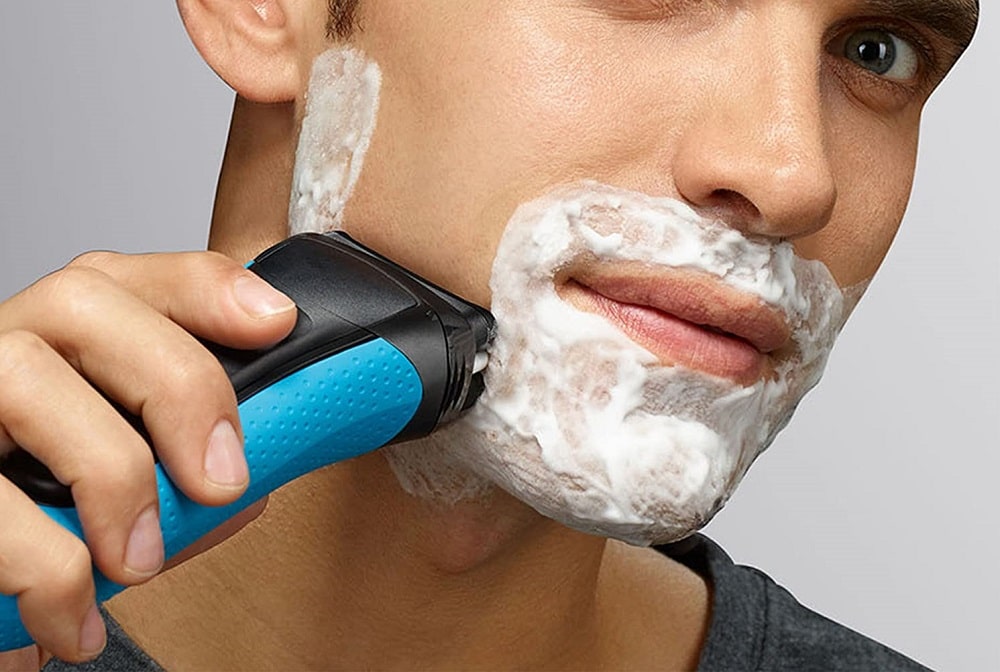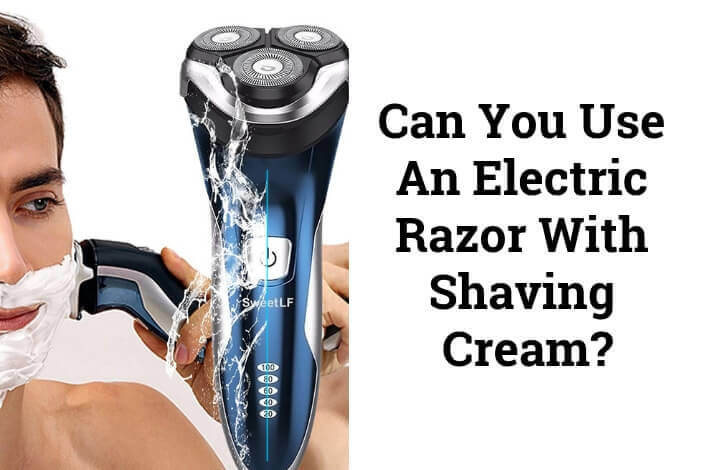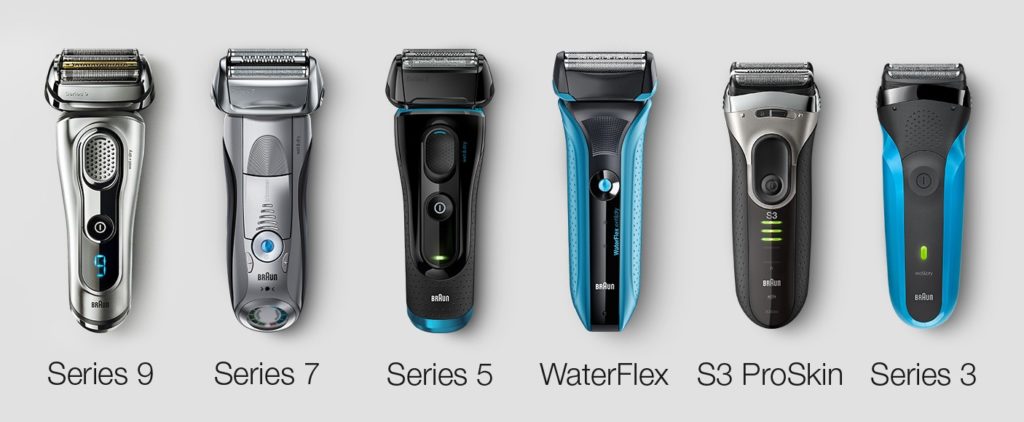In the realm of personal grooming, shaving cream with electric razors emerges as an indispensable ally, promising a smooth, irritation-free shave. Dive into this comprehensive guide to uncover the secrets of selecting, applying, and maximizing the benefits of this shaving essential.
From understanding the composition of shaving cream to exploring its myriad benefits, this exploration unveils the nuances of shaving with electric razors, empowering you with the knowledge to achieve a flawless shave every time.
Shaving Cream Composition

Shaving cream is a shaving aid that helps prepare the skin and hair for shaving. It is typically applied to the skin before using a razor, and it serves multiple functions.The chemical composition of shaving cream typically includes surfactants, emollients, and lubricants.
Surfactants are agents that reduce the surface tension of water, allowing it to penetrate the hair and soften it. Emollients are substances that soften and moisturize the skin, making it less prone to irritation. Lubricants reduce friction between the razor and the skin, allowing for a smoother shave.
Surfactants
Surfactants are amphiphilic molecules, meaning they have both hydrophilic (water-loving) and hydrophobic (water-hating) regions. This allows them to interact with both water and oil, which is essential for shaving. Surfactants in shaving cream help to create a lather, which helps to distribute the cream evenly over the skin and hair.
They also help to lift the hair away from the skin, making it easier to shave.
Emollients
Emollients are substances that soften and moisturize the skin. They are typically derived from natural oils or fats, such as lanolin, coconut oil, or shea butter. Emollients help to protect the skin from irritation and dryness, and they can also help to make the shave more comfortable.
Lubricants
Lubricants are substances that reduce friction between the razor and the skin. They are typically derived from silicones or oils, such as mineral oil or olive oil. Lubricants help to make the shave smoother and more comfortable, and they can also help to prevent razor burn and other skin irritation.
Shaving Cream Types

Shaving creams come in a variety of types, each with its own unique properties and benefits. Understanding the different types can help you choose the best shaving cream for your needs.
Foaming Shaving Cream
- Creates a thick, rich lather that helps soften facial hair and reduce friction during shaving.
- Available in various scents and formulas, including sensitive skin options.
- Examples: Gillette Foamy, Barbasol, Nivea Men Sensitive Shaving Cream.
Gel Shaving Cream
- Clear or translucent formula that provides a smooth, close shave.
- Easier to see where you’re shaving, reducing the risk of nicks or cuts.
- Examples: Edge Gel, Harry’s Shaving Gel, Anthony Shave Gel.
Cream Shaving Cream
- Thick, creamy formula that provides excellent lubrication and skin protection.
- Often contains moisturizing ingredients to soothe and nourish the skin.
- Examples: Proraso Shaving Cream, Taylor of Old Bond Street Shaving Cream, Truefitt & Hill Ultimate Comfort Shaving Cream.
Bar Shaving Cream
- Solid bar that is lathered using a shaving brush.
- Creates a rich, creamy lather that provides excellent skin protection.
- Examples: Arko Shaving Stick, Proraso Shaving Soap, Taylor of Old Bond Street Shaving Soap.
Shaving Cream for Electric Razors
Electric razors require specialized shaving creams to ensure a smooth and comfortable shave. Unlike regular shaving creams, those designed for electric razors contain unique ingredients that enhance the razor’s performance.
Advantages of Using Shaving Cream with Electric Razors
- Reduced Friction:Shaving cream creates a lubricating layer between the razor and skin, minimizing friction and preventing irritation.
- Enhanced Cutting:The cream helps align hairs, allowing the razor to cut more effectively, resulting in a closer shave.
- Skin Protection:Shaving cream contains emollients that moisturize and protect the skin, preventing dryness and irritation.
- Improved Glide:The cream’s smooth texture allows the razor to glide effortlessly over the skin, reducing the risk of nicks and cuts.
Disadvantages of Using Shaving Cream with Electric Razors
- Increased Cost:Shaving creams specifically designed for electric razors tend to be more expensive than regular shaving creams.
- Potential for Clogging:Some shaving creams can clog the razor’s blades if not rinsed thoroughly, affecting its performance.
Tips for Choosing the Right Shaving Cream for Electric Razors
- Check Compatibility:Ensure the shaving cream is specifically designed for use with electric razors.
- Consider Skin Type:Choose a cream that suits your skin type, such as sensitive skin or dry skin.
- Read Reviews:Refer to online reviews from other users to gain insights into the cream’s performance and effectiveness.
- Experiment with Different Brands:Find the brand and formula that works best for your individual needs and preferences.
Application Techniques
Mastering the art of shaving with an electric razor begins with understanding the proper application techniques. By following these simple steps, you can achieve a smooth, comfortable, and irritation-free shave.
The key to a successful electric shave lies in preparing your skin and applying the shaving cream correctly. This ensures that the razor glides effortlessly over your skin, preventing nicks, cuts, and razor burn.
Proper Application
- Cleanse your face:Start by thoroughly cleansing your face with warm water and a gentle cleanser to remove dirt, oil, and dead skin cells. This allows the shaving cream to penetrate deeply and provide a closer shave.
- Apply shaving cream:Dispense a generous amount of shaving cream onto your palm or a shaving brush. Use your fingers or the brush to apply the cream in circular motions to your face, ensuring even coverage.
- Create a rich lather:Using a shaving brush is highly recommended as it helps create a rich and creamy lather that lifts the hairs and softens them. This makes the shave smoother and reduces the risk of irritation.
- Shave in the direction of hair growth:Always shave in the direction that your hair grows. This prevents ingrown hairs and irritation. If you’re unsure of your hair growth pattern, run your fingers over your face to feel the direction of the hair.
- Rinse thoroughly:After shaving, rinse your face with cold water to close your pores and prevent irritation. Pat your face dry with a clean towel and apply a moisturizer to soothe and protect your skin.
Shaving Cream Benefits
Indulge in the myriad of benefits shaving cream offers for a smooth, irritation-free shaving experience. Shaving cream not only enhances the glide of your razor but also safeguards your skin from potential discomfort.
Let’s delve into the key benefits of incorporating shaving cream into your grooming routine:
Reduces Irritation and Razor Burn
- Shaving cream acts as a protective barrier between your skin and the razor, reducing friction and minimizing the risk of irritation and razor burn.
- Its lubricating properties allow the razor to glide smoothly over your skin, preventing nicks and cuts.
Prevents Ingrown Hairs
- Shaving cream helps soften and lift hair follicles, making them easier to shave.
- By preventing the hair from being cut too close to the skin, shaving cream reduces the likelihood of ingrown hairs.
Maximizing Shaving Cream Benefits
- Apply a generous amount of shaving cream to damp skin.
- Allow the shaving cream to sit for a few minutes to soften the hair.
- Shave with the grain of your hair growth to avoid irritation.
- Rinse your razor frequently to remove hair and shaving cream.
- Moisturize your skin after shaving to soothe and protect it.
Alternative Shaving Methods

Shaving cream is a common shaving aid, but it is not the only option. There are a number of alternative shaving methods that do not require shaving cream. These methods can be just as effective as shaving with cream, and they can sometimes be more convenient or less expensive.
Dry Shaving
Dry shaving is a method of shaving without using any shaving cream or water. This method is quick and convenient, and it can be done anywhere. However, dry shaving can also be more irritating to the skin than wet shaving, and it can lead to razor burn and ingrown hairs.
Shaving with Soap
Shaving with soap is a traditional method of shaving that has been used for centuries. Soap is a good lubricant, and it can help to reduce razor burn and ingrown hairs. However, soap can also be drying to the skin, so it is important to use a moisturizing soap.
Shaving with Oil
Shaving with oil is a newer method of shaving that is becoming increasingly popular. Oil is a good lubricant, and it can help to reduce razor burn and ingrown hairs. Oil can also be moisturizing to the skin, so it is a good choice for people with dry skin.
Shaving Cream Market
The shaving cream market is a highly competitive and dynamic industry, driven by the growing demand for personal care products and the increasing popularity of electric razors. Key players in the market include Procter & Gamble, Unilever, Edgewell Personal Care, and Beiersdorf.
- Procter & Gamble:Holds a significant market share with brands like Gillette, Braun, and Old Spice.
- Unilever:Offers a wide range of shaving creams under the Dove, Axe, and Vaseline brands.
- Edgewell Personal Care:Known for its Schick and Wilkinson Sword brands, with a strong presence in the electric razor market.
- Beiersdorf:Produces Nivea shaving creams, known for their moisturizing and skin-soothing properties.
Industry trends include the rise of natural and organic shaving creams, the increasing adoption of electric razors, and the growing popularity of subscription-based shaving services. The market is projected to experience steady growth in the coming years, driven by increasing disposable income and the growing awareness of personal grooming.
Shaving Cream Innovations
Shaving cream technology has undergone significant advancements in recent years, enhancing the shaving experience for both men and women. These innovations focus on improving skin protection, reducing irritation, and providing a smoother and more comfortable shave.
One of the most notable innovations is the development of shaving creams with advanced moisturizing formulas. These creams contain hydrating ingredients such as aloe vera, shea butter, and hyaluronic acid, which help to soothe and protect the skin during shaving.
They leave the skin feeling soft, smooth, and less prone to irritation.
Transparent Shaving Cream
Transparent shaving creams offer several benefits. They provide better visibility during shaving, allowing users to see exactly where they are shaving and avoid nicks and cuts. Additionally, transparent creams are often lighter in texture and easier to rinse off, leaving no residue behind.
Foaming Shaving Creams
Foaming shaving creams create a rich, dense lather that provides excellent coverage and lubrication. The foam helps to lift hairs away from the skin, making them easier to cut and reducing the risk of razor burn. Foaming creams are particularly beneficial for those with sensitive skin or thick facial hair.
Shaving Creams with Built-in Pre-Shave Oil
Shaving creams with built-in pre-shave oil combine the benefits of a pre-shave oil and a shaving cream in one convenient product. The pre-shave oil helps to soften facial hair and prepare the skin for shaving, while the shaving cream provides lubrication and protection.
This combination reduces friction and irritation, resulting in a smoother and more comfortable shave.
Shaving Cream Safety
Shaving cream is generally safe to use, but there are potential risks and precautions to be aware of. To ensure a safe and comfortable shaving experience, it’s important to use shaving cream correctly and follow proper storage and disposal practices.
Potential risks associated with shaving cream include allergic reactions, skin irritations, and improper disposal.
Allergic Reactions
Some people may be allergic to certain ingredients in shaving cream, such as fragrances, dyes, or preservatives. If you experience any symptoms of an allergic reaction, such as redness, itching, or swelling, discontinue use and consult a healthcare professional.
Skin Irritations, Shaving cream with electric razor
Shaving cream can also cause skin irritations, especially if you have sensitive skin. To minimize the risk of irritation, choose shaving creams that are fragrance-free, hypoallergenic, and non-comedogenic. Additionally, avoid using shaving cream on broken or irritated skin.
Proper Storage and Disposal
Store shaving cream in a cool, dry place away from direct sunlight. Avoid freezing shaving cream, as this can alter its consistency and effectiveness. When disposing of shaving cream, follow local regulations and guidelines. Do not pour shaving cream down the drain, as it can clog pipes.
Last Point: Shaving Cream With Electric Razor
Shaving cream with electric razors has revolutionized the shaving experience, offering a comfortable, close shave. Whether you’re a seasoned pro or a novice navigator in the world of shaving, this guide has equipped you with the essential knowledge to elevate your shaving routine.
Embrace the power of shaving cream and electric razors, and embark on a journey towards a smooth, irritation-free shave.
Commonly Asked Questions
Can I use regular shaving cream with an electric razor?
While regular shaving cream can be used with electric razors, it’s not recommended. Electric razors require shaving cream specifically designed for them to ensure optimal performance and skin protection.
How often should I change my shaving cream?
Shaving cream should be replaced every 3-6 months to maintain its effectiveness and prevent bacteria growth.
Can shaving cream cause skin irritation?
Some shaving creams may contain ingredients that can irritate sensitive skin. Always test a small amount on a patch of skin before applying it to your entire face.